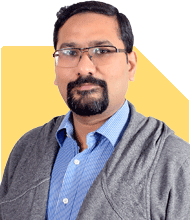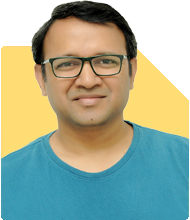Aashish Sood |127 Answers |Ask -Follow
CAT, Management Expert - Answered on Jul 29, 2023
He also mentors management student hopefuls for the group discussion and personal interview rounds that follow competitive examinations.
He has appeared for CAT seven times since 2016 and scored in the 99.9 percentile.
Sood has 16 years of work experience as a management consultant, strategy consultant and research associate.... more

WHICH COURSE IS BETTER BA ECO(HONS) OR BA BUSINESS ECONOMICS, PLEASE SUGGEST
BA Economics (Hons) is a specialized degree that focuses on the in-depth study of economics. It covers a wide range of economic theories, principles, and concepts, including microeconomics, macroeconomics, econometrics, international economics, etc.
While the course offers a strong foundation in economics, which can lead to a career in economic research, academia, public policy, or working with international organizations, it may not provide as much exposure to business-specific concepts and practices compared to BA Business Economics.
BA Business Economics is a course that blends economic principles with business applications. It focuses on how economic theories can be applied to real-world business situations, decision-making, market analysis, and strategic planning.
While it may emphasize the practical application of economic principles in a business context, making it relevant to the corporate world, it may not delve as deeply into theoretical economic concepts compared to BA Economics (Hons).
Research the curriculum of both courses at the specific institutions you are considering, speak with current students or alumni if possible, and evaluate which course aligns better with your interests and long-term career goals.
You may like to see similar questions and answers below
Nayagam P P |10859 Answers |Ask -Follow
Career Counsellor - Answered on Aug 29, 2024
Patrick Dsouza |1429 Answers |Ask -Follow
CAT, XAT, CMAT, CET Expert - Answered on Jul 09, 2025
Ramalingam Kalirajan |10908 Answers |Ask -Follow
Mutual Funds, Financial Planning Expert - Answered on Dec 20, 2025
Ramalingam Kalirajan |10908 Answers |Ask -Follow
Mutual Funds, Financial Planning Expert - Answered on Dec 20, 2025
Naveenn Kummar |237 Answers |Ask -Follow
Financial Planner, MF, Insurance Expert - Answered on Dec 20, 2025
Ramalingam Kalirajan |10908 Answers |Ask -Follow
Mutual Funds, Financial Planning Expert - Answered on Dec 19, 2025
Nayagam P P |10859 Answers |Ask -Follow
Career Counsellor - Answered on Dec 19, 2025
Ramalingam Kalirajan |10908 Answers |Ask -Follow
Mutual Funds, Financial Planning Expert - Answered on Dec 19, 2025
Ramalingam Kalirajan |10908 Answers |Ask -Follow
Mutual Funds, Financial Planning Expert - Answered on Dec 19, 2025
Ramalingam Kalirajan |10908 Answers |Ask -Follow
Mutual Funds, Financial Planning Expert - Answered on Dec 19, 2025
Radheshyam Zanwar |6751 Answers |Ask -Follow
MHT-CET, IIT-JEE, NEET-UG Expert - Answered on Dec 19, 2025
Radheshyam Zanwar |6751 Answers |Ask -Follow
MHT-CET, IIT-JEE, NEET-UG Expert - Answered on Dec 19, 2025
























